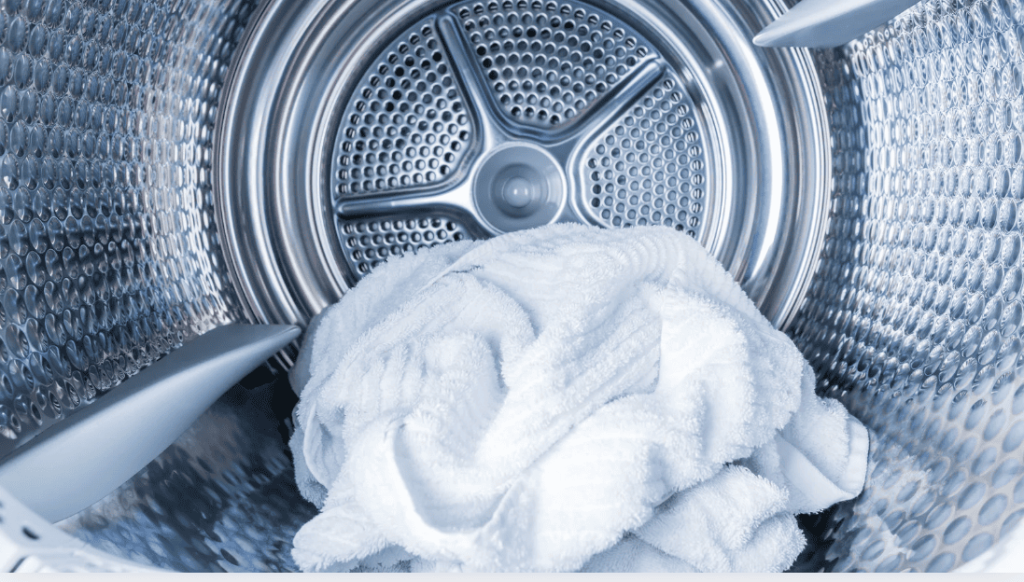
Understand Why Mold Forms in Your Washer
Mold in washing machines is a common yet overlooked issue, often caused by moisture trapped in nooks, crannies, and gaskets. The seals, especially the rubber gasket and drum, are perfect breeding grounds for mold growth due to their moisture-retentive nature. In humid environments like laundry rooms, the moisture left behind in these areas after every wash cycle can linger, creating the perfect condition for mold to thrive. When this happens, your washer not only becomes a breeding ground for bacteria but it can also cause musty odors that make your clothing smell foul.
Identify the Signs of Mold Growth
If your washer is developing mold, you might notice visible growth in certain areas, particularly around the door seals, drum, and dispenser compartments. Mold comes in many forms, from black spots to white fuzzy growth. You may also notice a musty or earthy smell, which is a sign of microbial volatile organic compounds (MVOC). This smell is an alarm signaling the presence of harmful microorganisms, and it can cause respiratory issues when exposed to it for prolonged periods. Keep an eye out for unusual colors, textures, and shapes on the internal parts of your washing machine that might indicate mold.
How to Prevent Mold Growth in Your Washer
The best way to tackle this issue is through preventative measures. Start by ensuring proper ventilation in your laundry room. Keeping the room well-ventilated can reduce the humidity that encourages mold growth. Also, after every load, leave the washer door ajar to allow the moisture to escape, preventing it from pooling inside.A simple tip is to run a self-clean cycle or a sanitizing cycle with hot water to eliminate any lingering bacteria or mold spores. If mold is already present, use appropriate products to kill off the spores.
Cleaning Your Washer: Essential Steps
To eliminate mold and bacteria effectively, cleaning your washer is a must. Start by checking the gasket and lid areas for any visible mold growth. Use a mixture of white vinegar and water in a spray bottle to clean the gasket, wiping away the mold with a microfiber towel. You can also soak the tray or dispenser in hot water to break down any grime and residue. Don’t forget to clean surrounding areas like the washer’s outer ring or the space around the drum.For persistent mold, consider scrubbing these areas with a toothbrush or bristled brush to get rid of stubborn spots. Wipe the surfaces with a clean, disposable rag to ensure that debris or spores are removed. Repeat this process regularly to keep mold at bay.

Don’t Overload Your Washer
Overloading your washer not only affects its cleaning efficiency but also increases the chances of mold developing. When you overload the washer, there’s less space for air to circulate, leading to trapped moisture. This promotes mold growth and affects the longevity of the appliance. Stick to the recommended load size for your washing machine model, and avoid using excessive detergent or fabric softener, as this can contribute to residue buildup that encourages mold.
Maintain Proper Airflow
One of the most overlooked but crucial aspects of mold prevention is ensuring that your washer is dry and well-ventilated. After using the machine, leave the door open to allow airflow and help dry out any remaining moisture. Clothing should be removed promptly to prevent them from sitting in a humid environment, which could lead to mildew growth. The gasket and door seals should also be wiped down after each use to ensure that no moisture remains trapped.
Use the Right Products
Not all cleaning products are created equal when it comes to preventing mold. Avoid using harsh chemicals like bleach, as they can cause damage to the machine’s internal components. Instead, opt for safer, more effective alternatives that are specifically designed for eliminating mold and preventing recurrence, without causing harm to your washing machine.
Clean the Drainage Pipes
The drainage pipes can also harbor mold if not properly maintained. Ensure that the drainage pipes are clear of any blockages, as stagnant water can lead to mildewing. Regularly check for any leaks or pooling of water around the pipe area, and fix any issues promptly.
How Often Should You Clean Your Washer?
To keep your washer in optimal condition, make cleaning a regular part of your laundry routine. Perform a deep cleaning every month to ensure there is no build-up of mold, grime, or residue. In between deep cleanings, do a quick wipe-down of the gasket and door seals after every wash to prevent moisture accumulation.
Replace Old Washer Parts if Necessary
If you notice persistent issues with mold or a musty odor despite regular cleaning, it might be time to replace parts such as the gasket or dispenser. Over time, these parts can wear out, leading to further moisture retention. Replacing them can restore your washer’s efficiency and prevent mold from reappearing.






